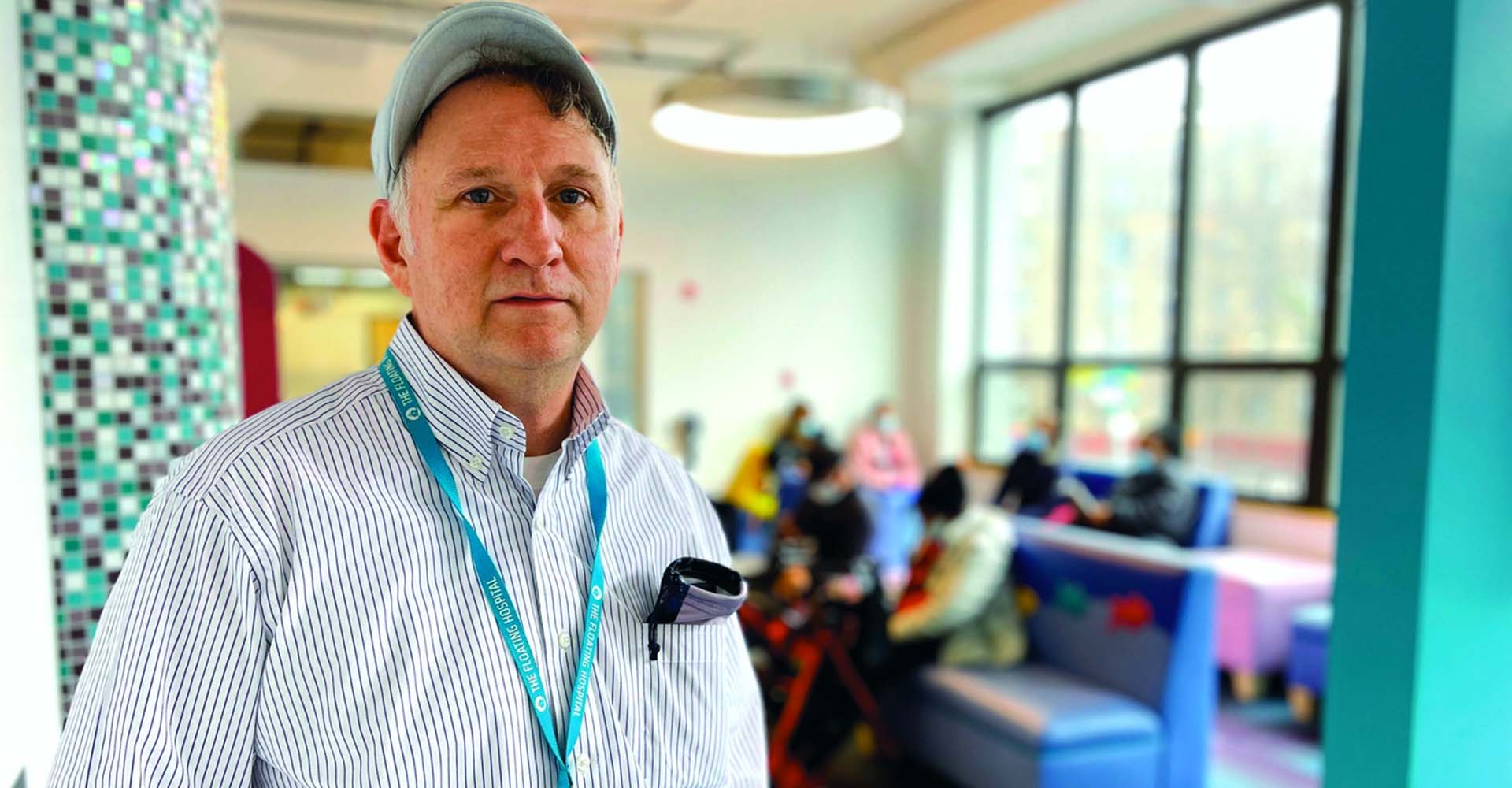
Charting a Steady Course
This past April, Floating Hospital President Sean Granahan was profiled in Irish America magazine. The wide-ranging article led in with a pivotal moment in the Hospital’s trajectory: a 2004 meeting at a diner between Granahan, then the organization’s in-house lawyer, and concerned Hospital board members.
“The numbers weren’t pretty,” Granahan recalled in the article. “In fact, they were un-pretty.” Granahan was put on the spot to develop a Plan B to get the Hospital out of its difficult financial position. Fortunately for him, the service at the diner that day was particularly slow.
Asserting that The Floating Hospital owes its present-day existence to a single, hour-long meeting in a Midtown diner may sound like an oversimplification. Still, it is a historical fact, if a quintessentially New York one.
More importantly, the meeting didn’t merely result in the organization’s survival; the changes instituted in the years following the 2004 encounter would significantly transform it, improving its primary care and greatly expanding the scope of the “relief” portion of its core mission—resulting in The Floating Hospital of today, which is much more to its patients than just healthcare.
But in 2004, the organization was struggling, with leadership unsure how—if at all—to move forward. The executive director had recently resigned and sent a letter to the board recommending closure. However, Granahan assured them between sips of diner coffee that the situation could be remedied and requested six months to do so. If he failed, he offered to stay in place and wind down the Hospital’s operations for closure. It was a gamble that continues to pay dividends to countless families living in New York City’s homeless shelters and domestic violence safe houses.
Granahan’s involvement with The Floating Hospital starts with Epstein, Becker & Green, an employment and workforce law firm that assigned Granahan to the charity hospital in 1997, where he provided counsel on HR matters. As the years passed and he became more and more familiar with the organization, Granahan’s respect for it and its clinic employees grew.
“It’s hard to work there and not be impressed by the dedication of the staff,” Granahan told Irish America magazine. “You’d have to be a mummy not to be affected by them.”
When, in 2003, an opportunity arose to serve The Floating Hospital as its in-house lawyer, or “General Counsel,” Granahan seized it, recognizing a chance to work more closely with the hospital staff he had come to admire—and to play a role in the betterment of people’s lives.
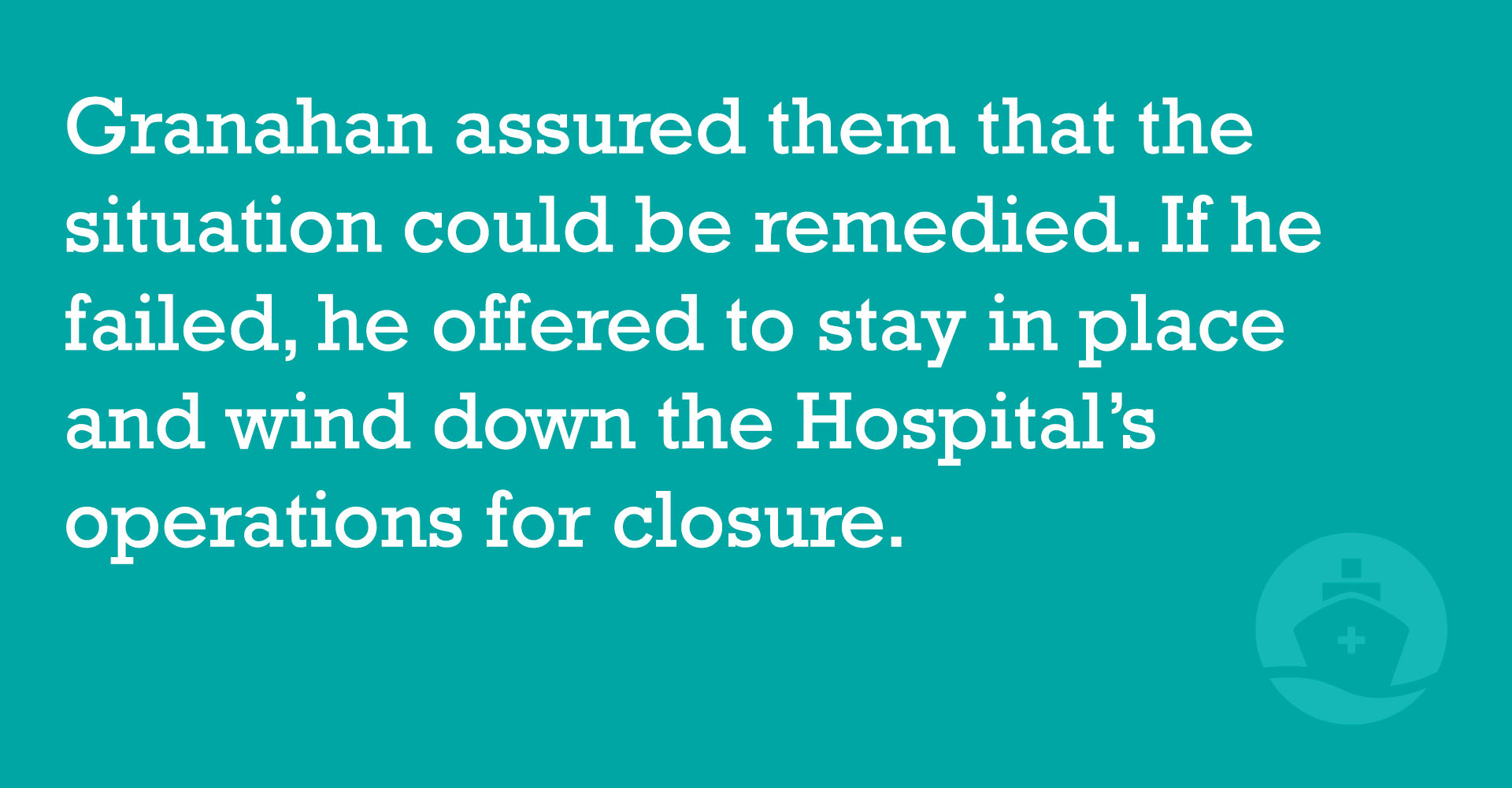
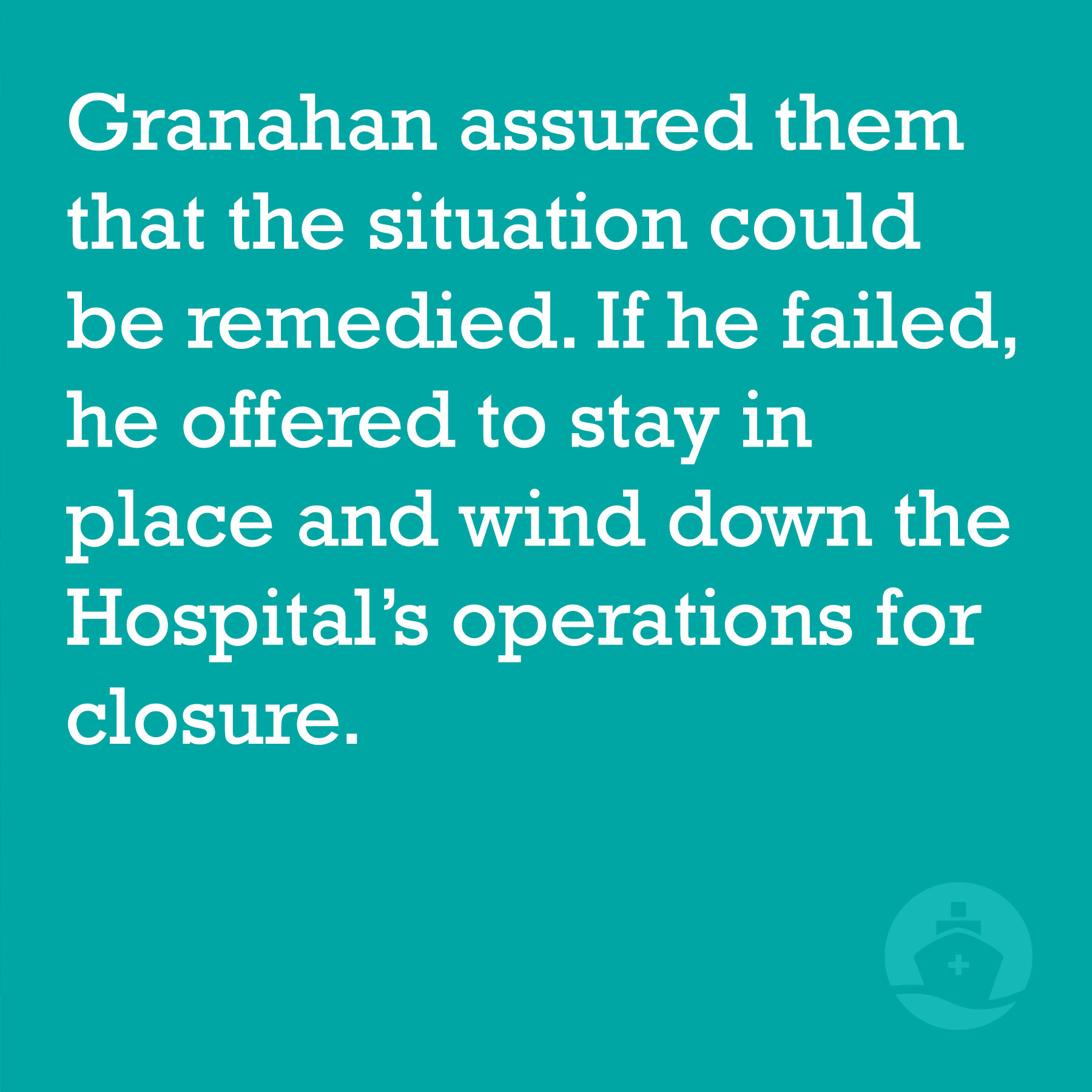
In the six months following his 2004 meeting with the board, General Counsel Granahan was made co-CEO with then-Chief Financial Officer S. Stiles Nyerere. Together, they began addressing the most pressing issues facing the organization. Vitally, they reanimated the organization’s fundraising arm to expand programs outside the scope of a regular health clinic: non-medical care programs like the Good Health Shuttle and health education.
In addition to strengthening private funding, critical state and federal contracts needed renegotiating to meet the Hospital’s enormous responsibilities.
“At the time, we were treating 6.5% of the country’s homeless population but weren’t receiving enough funding from the government as a federally qualified health center for that service,” explains Granahan. “We spent years back and forth with the federal government to get it to pay its fair share for the service we were providing overall.”
Also, the Hospital’s Medicaid rate was outdated and required state intervention: “We had to go back and renegotiate our certificate of operation from the New York State Department of Health so that it reflected all the services we were providing that we weren’t getting reimbursed for.”
Granahan’s decision to consolidate internal medicine (adult treatment) with pediatrics was crucial and significantly improved patient care. “We were not a family practice model like we are today,” says Granahan. “We consolidated it into a family practice model, to make it much more efficient and enable us to see whole families as a group.“
“It was a total overhaul, a dramatic transformation.”
One question remains: what motivated Granahan to intervene on behalf of The Floating Hospital at that diner in the first place?
Answers Granahan, “I was captivated by the rich maritime history of The Floating Hospital. And it was an opportunity to work at one of those iconic and truly New York institutions. But in the end, it isn’t history that keeps you going; it’s the staff. They have this incredible devotion to what they do and are like a family. The families we treat understand that they are part of a bigger family—a welcoming one.”
Our present moment is as challenging as any faced by the 157-year-old organization. The Hospital has been the steady face of care for homeless families in the five boroughs of New York City, in what Granahan calls a “humanitarian crisis,” marked by food insecurity, homelessness, and poor health outcomes. However, he remains confident in the Hospital’s ability to fulfill its mission.
“Despite the challenges, we always have reasons to be optimistic,” Granahan told Irish America magazine. “The city needs a place for kind-hearted people to work and do what they do best. So we roll up our sleeves and continue to help families who need it.”
Granahan and the board’s 2004 diner dialogue was a make-or-break moment for the organization that could have easily been derailed by circumstance. “If service hadn’t been so slow that day,” Granahan mused, “we were likely to have rushed through that meeting—things could have turned out very differently for The Floating Hospital and the families who rely on our care.”
By Matt Fink
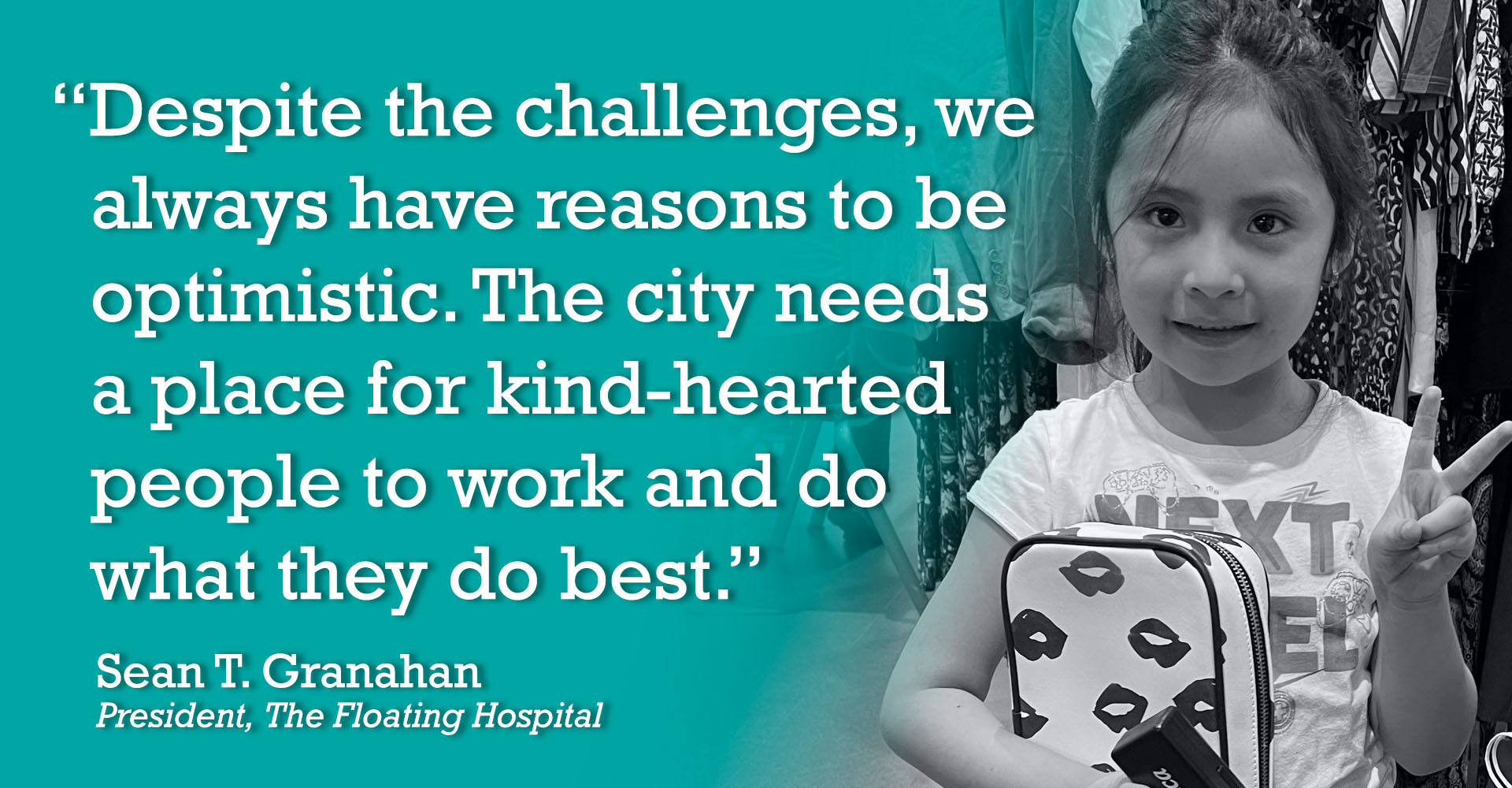
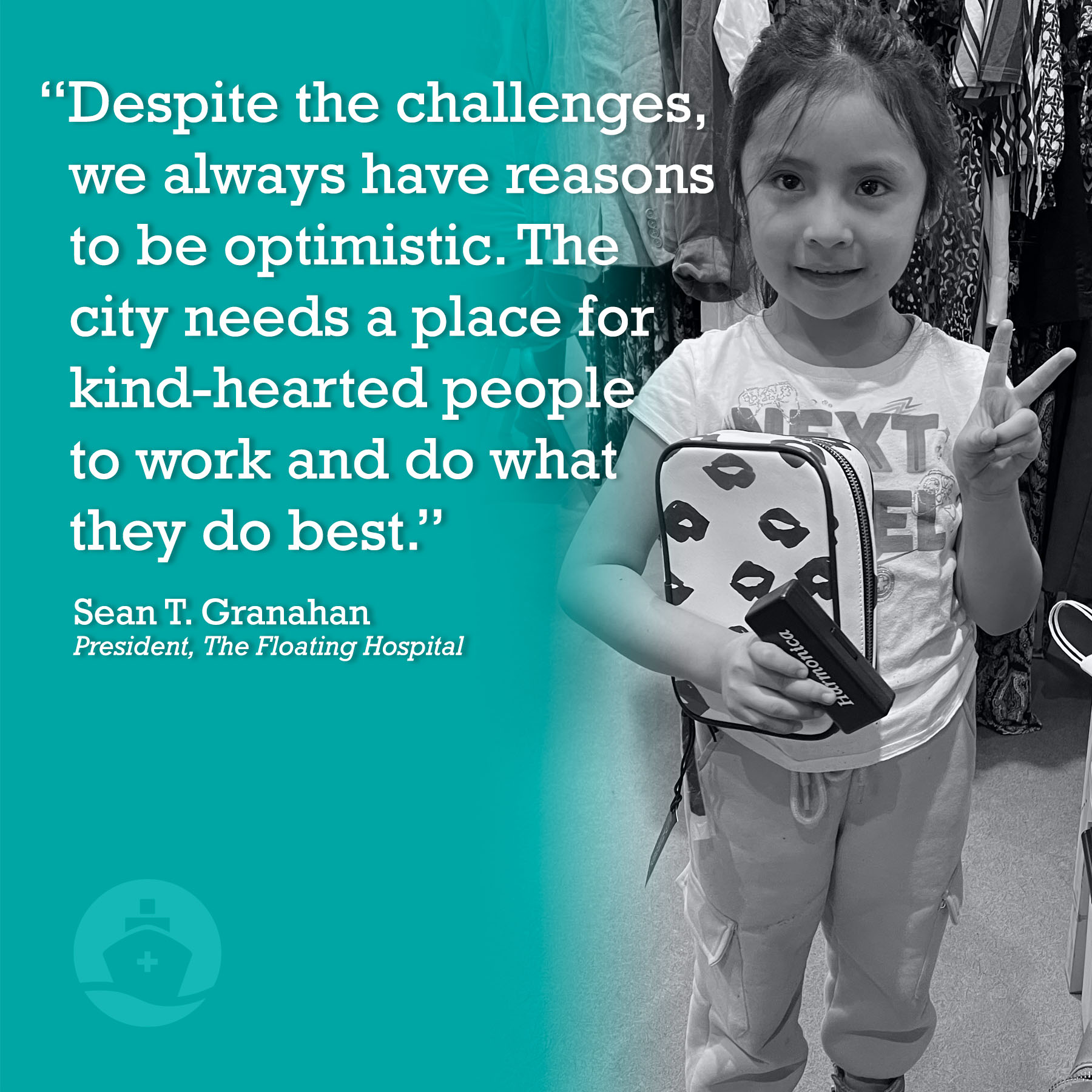
This post featured in our monthly newsletter from May/June 2023.
To get the latest from The Floating Hospital directly to your inbox, sign up using the form below.
Other posts from this newsletter:
Share This Story, Choose Your Platform!
Categories
Tags
The Floating Hospital provides high-quality healthcare to anyone who needs it regardless of race, ethnicity, religion, gender, immigration or insurance status, or the ability to pay. By providing unrestricted medical care in tandem with health education and social support to vulnerable New York City families, The Floating Hospital aims to ensure those most in need have the ability to thrive, not just survive.


